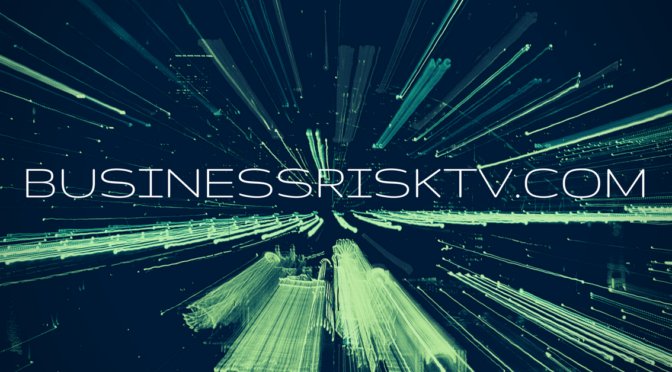The Gathering Storm: Preparing for Economic Turbulence in 2024 and Beyond
The winds of economic uncertainty are picking up, and many experts forecast a turbulent future in 2024 and beyond. While the present may not be a tranquil ocean, the coming horizon could unveil a perfect storm of converging crises. So, it’s not the time to raise the anchor and drift idly; it’s the moment to batten down the hatches and weather the coming tempest.
Economic Crisis Examples: A Looming Multitude
Before diving into preparation, let’s acknowledge the brewing threats. These are not mere whispers on the wind, but real, tangible anxieties gripping the global landscape.
-
Inflationary Headwinds: The spectre of inflation, once a distant memory, has reared its ugly head. Prices are skyrocketing across essential goods and services, squeezing household budgets and threatening social unrest. The U.S., for instance, saw inflation at a 40-year high of 9.1% in June 2022, though it has dipped since, the worry of resurgence remains. Hopes that global inflation is coming under control may prove premature given continuing wars in Ukraine and Gaza/Israel and drought in Panama Canal causing shipping costs (and future prices in shops and service industry) to spike and limiting interest rate cut wiggle room in West.
-
Stagflationary Nightmares: The chilling possibility of stagflation – a toxic cocktail of high inflation and low growth – lurks in the shadows. Central banks, attempting to curb inflation, tighten their monetary belts, potentially choking off economic activity and jobs. This double whammy could be especially devastating for developing nations. Persistently high inflation due to above will, or should, limit the West’s central banks ability to pump cheap money into grow economies that are already in or slipping into recession.
-
Geopolitical Flashpoints: From the ongoing war in Ukraine to simmering tensions in the Middle East and Asia (continuing tensions with China over a number of issues including Taiwan), geopolitical volatility threatens to disrupt global supply chains and energy markets, further fuelling inflation and economic turbulence.
-
Debt Dilemma: National and household debt levels have ballooned in recent years (USA alone has $34 trillion in debt and set to borrow more money to pay down existing debt in region of $1 trillion debt interest per annum more than it spends on defence), leaving economies vulnerable to rising interest rates and potential defaults. A wave of bankruptcies, both personal and corporate, could trigger a domino effect, amplifying the crisis. This will include a wave of redundancies in 2024 which will systemically attack viability of banking system.
These are just a few examples of the economic headwinds gathering force. While the extent of their impact remains uncertain, one thing is clear: ignoring the storm clouds won’t make them disappear.
Quotes on Preparing for the Global Economic Storm 2024:
- “A stitch in time saves nine,” as the adage goes. Preparing for a potential economic crisis in 2024 isn’t about fear-mongering; it’s about responsible anticipation and proactive risk management.
- “The best time to plant a tree was 20 years ago. The second-best time is now,” quips entrepreneur, Mark Evans. He echoes the sentiment that “taking small steps today, like building financial buffers and honing essential skills, can make a world of difference tomorrow.”
- “We can’t control the winds, but we can adjust our sails.” Even in the face of economic uncertainty, we can adapt, innovate, and build resilience through collective action and community support.
Preparation: The Anchor in the Storm
So, how do we navigate this impending economic storm? While the future remains unpredictable, proactive measures can increase our chances of weathering the turbulence. Here are some key areas to focus on:
- Financial Fortitude: Shore up your finances. Build an emergency fund that can cover several months of essential expenses. Revise your budget, cutting unnecessary costs and prioritising necessities. Pay down debt whenever possible to reduce ongoing financial burdens.
- Skill Development: Invest in yourself. Hone your existing skills and acquire new ones that might be valuable in a changing job market. Focus on adaptability and resilience, developing transferable skills that can be applied in diverse settings.
- Community Connections: Strengthen your social network. Fostering close bonds with family, friends, and neighbours can provide invaluable support and resources during challenging times. Community resilience flourishes through collaboration and mutual aid.
- Sustainable Strategies: Embrace sustainable practices in your daily life. Grow your own food, invest in renewable energy sources, and minimise your environmental footprint. Building self-sufficiency reduces reliance on volatile external systems.
- Positive Mindset: Cultivate a resilient and optimistic attitude. Recognise that challenges are inevitable, but so is our ability to overcome them. Focus on finding solutions, adapting to change, and embracing an “always learning” approach.
Remember, preparation is not about passively waiting for the storm to hit; it’s about actively building the tools and resources we need to ride it out.
Beyond 2024: Building a Resilient Future
This isn’t just about surviving the immediate economic storm; it’s about forging a more resilient future for ourselves and generations to come. We must advocate for policies that promote sustainable economic growth, address income inequality, and build social safety nets. Supporting initiatives that foster environmental stewardship and global cooperation is crucial for mitigating future vulnerabilities.
The coming years may be fraught with challenges, but they also present an opportunity for transformation. This economic storm can be a catalyst for change, pushing us to rethink our relationship with money, resources, and each other. We can emerge from the turbulence stronger, more adaptable, and more conscious of the interconnectedness of our global community.
Here are some final thoughts to leave you with:
- Remember, you are not alone. Millions of people worldwide are facing similar anxieties and preparing for uncertain times. Sharing information, resources,and experiences can empower and strengthen individual and collective resilience.
- Embrace creativity and innovation. Difficult times often spark ingenuity and resourcefulness. Look for unconventional solutions, explore alternative pathways, and don’t be afraid to challenge the status quo.
- Focus on the silver lining. Amidst the storm clouds, there are always glimmers of hope. Invest in your mental and emotional well-being. Find joy in the everyday, nurture your relationships, and cultivate a sense of purpose and meaning that transcends economic uncertainties.
The economic storm of 2024 and beyond may be formidable, but it doesn’t have to define us. By preparing today, building resilience, and fostering a spirit of collaboration, we can navigate the turbulence and emerge stronger, more empowered, and ready to co-create a more sustainable and equitable future for all.
10 Recommendations for Business Leaders to Build Business Resilience:
1. Diversify Revenue Streams: Don’t rely on a single source of income. Explore new products, services, or markets to spread risk and ensure revenue flow during potential downturns. Remember, the saying “don’t put all your eggs in one basket.”
2. Cultivate Agility: Embrace a flexible and adaptable mindset. Prepare contingency plans for different economic scenarios and be ready to pivot your business model at short notice. Encourage innovation and experimentation to stay ahead of changing market trends.
3. Invest in Technology: Leverage technology to automate tasks, streamline operations, and improve efficiency. This can reduce costs, boost productivity, and make your business more responsive to external pressures.
4. Prioritise Talent Acquisition and Retention: Attract and retain top talent by offering competitive compensation, fostering a positive work culture, and investing in employee development. A strong and loyal team is vital for weathering difficult times.
5. Strengthen Supply Chains: Diversify your supplier base and build strong relationships with key partners. Develop alternative sourcing strategies to mitigate the impact of disruptions in any one part of your supply chain.
6. Manage Debt Wisely: Avoid excessive debt burdens, especially during uncertain times. Maintain healthy cash reserves and negotiate favourable loan terms to ensure financial stability and maneuverability.
7. Communicate Transparently: Keep employees, customers, and stakeholders informed about any challenges or changes facing the business. Open communication builds trust and fosters collaborative solutions in the face of adversity.
8. Embrace Sustainability: Implement sustainable practices across your operations, from resource management to environmental consciousness. This can not only mitigate economic risks but also enhance your brand image and attract environmentally conscious consumers.
9. Build Community Partnerships: Collaborate with other businesses, organisations, and community stakeholders. Shared resources, collective knowledge, and mutual support can strengthen everyone’s resilience in the face of economic challenges.
10. Foster a Positive Mindset: Encourage optimism and resilience within your organisation. Lead by example with a proactive and solutions-oriented approach. A positive company culture can boost morale, drive productivity, and create a fertile ground for navigating difficult times.
By implementing these recommendations, business leaders can equip their organisations for the coming economic storm and emerge stronger on the other side. Remember, preparation, adaptation, and collaboration are key to building a resilient business that can thrive in any climate.
Get help to protect and grow your business
Subscribe for free business risk warnings and risk reviews
Read
more business risk management articles
o

